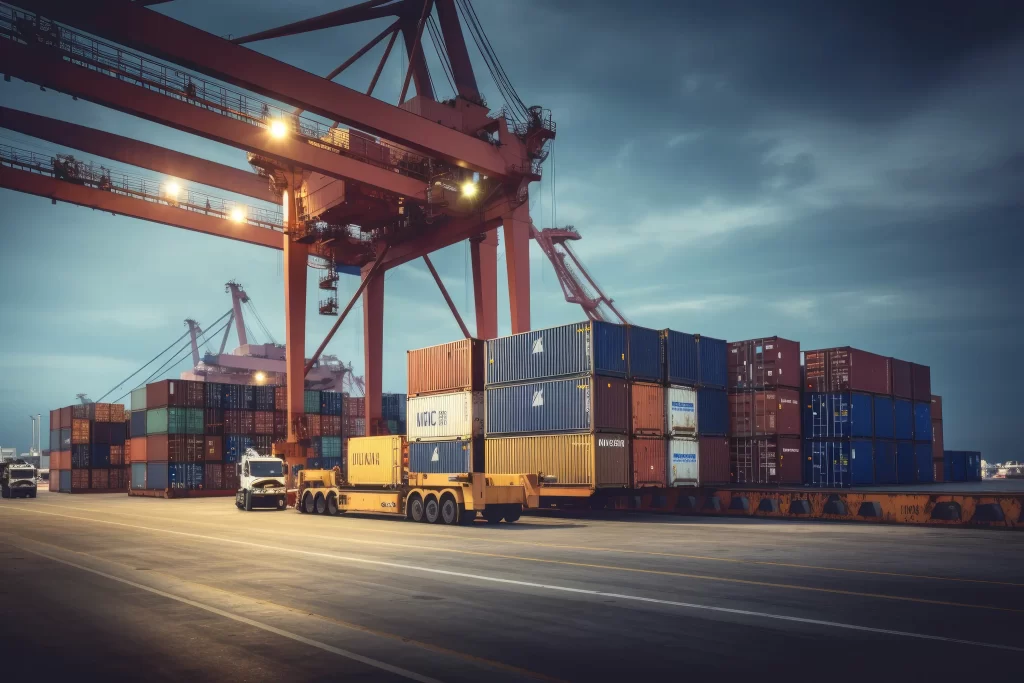Transport and logistics are the lifeblood of modern economies, facilitating the movement of goods and people efficiently and effectively. Whether you’re a seasoned industry professional or just starting to explore this vast field, understanding the basics of transport and logistics is crucial.
In this comprehensive guide, we’ll cover everything you need to know, from the fundamentals to the various modes of transportation and services.
What are the basics of transport and logistics?
Transport and logistics are integral components of supply chain management. They encompass the planning, execution, and control of the movement and storage of goods and services from one location to another.
Key elements of transport and logistics include route planning, inventory management, warehousing, packaging, and more.
Efficient transport and logistics systems are vital for businesses to optimize operations, reduce costs, and meet customer demands. It involves a series of interconnected processes and decisions that ensure products or services reach their intended destinations in a timely and cost-effective manner.
2. What are the 4 Types of transportation in logistics?
Transportation is a critical aspect of logistics, and it comes in various forms. The four primary types of transportation in logistics are:
a. Road Transportation: This mode utilizes trucks, vans, and other vehicles to move goods over road networks. It’s a flexible and widely used option, particularly for short- to medium-distance shipments.
b. Rail Transportation: Trains are an efficient means of moving large quantities of goods over long distances, especially bulk cargo.
c. Maritime Transportation: Ships and vessels transport goods across oceans and seas, handling international trade and shipping. It’s essential for global logistics.
d. Air Transportation: Airlines move high-value and time-sensitive cargo quickly across the globe, making it an essential mode for expedited deliveries.
3. What are logistics and transport services?
Logistics and transport services encompass a wide range of activities that support the efficient movement of goods and people. These services are crucial for businesses and organizations to streamline their supply chain operations and ensure that products and services reach their intended destinations in a timely and cost-effective manner. Here’s an overview of logistics and transport services:
- Freight Forwarding:
Freight forwarding is a core logistics service that involves coordinating the shipment of goods from the point of origin to the destination.
Freight forwarders are responsible for various tasks, including:
- Booking cargo space with transportation providers (e.g., airlines, shipping lines, trucking companies).
- Arranging the transportation of goods, which may involve multiple modes (air, sea, land).
- Handling customs clearance, import/export documentation, and compliance with international regulations.
- Managing the logistics and logistics-related paperwork, such as bills of lading and certificates of origin.
- Freight forwarders act as intermediaries between shippers and transportation providers, ensuring that goods move seamlessly and efficiently across different transportation modes.
2. Warehousing:
Warehousing services provide storage facilities for goods before they are distributed to their final destinations. These facilities are crucial for effective inventory management, helping businesses balance supply and demand efficiently.
Key functions of warehousing services include:
- Receiving and storing goods securely
- Managing inventory, tracking stock levels, and ensuring timely replenishment
- Order picking, packing, and preparing goods for shipment.
- Distribution, which may involve delivering goods to retail stores, customers, or other distribution centers,
- Warehouses can be strategically located to optimize supply chain operations, reducing transportation costs and delivery times.
Also read: Convenience at Your Doorstep: Exploring the Benefits of Door to Door Delivery Services
3. Supply Chain Management:
Supply chain management is a comprehensive approach to overseeing the entire flow of materials, information, and finances throughout the supply chain. This service involves coordinating various activities, from sourcing raw materials to delivering the finished product to the end customer.
Key aspects of supply chain management include:
- Demand forecasting and planning
- Procurement and supplier management.
- Production and manufacturing
- Inventory optimization.
- Distribution and logistics.
- Customer order fulfillment.
- Performance monitoring and continuous improvement
Effective supply chain management ensures that goods move smoothly and cost-effectively from production to consumption, meeting customer demands while minimizing inefficiencies and costs.
4. Third-Party Logistics (3PL) Services:
Many businesses choose to outsource some or all of their logistics functions to specialized providers known as third-party logistics (3PL) companies. 3PL services encompass a wide range of logistics activities, offering businesses the flexibility to focus on their core operations while experts handle their logistics needs. Common services provided by 3PL companies include:
- Transportation management: managing the movement of goods using various modes of transport
- Warehousing and distribution: providing storage and order fulfillment services
- Inventory management: optimizing stock levels to prevent shortages and excess inventory
- Order processing and fulfillment: handling customer orders and ensuring timely delivery
- Customs brokerage and compliance: Navigating international trade regulations and customs requirements
- Supply chain optimization: streamlining processes and identifying cost-saving opportunities
- By partnering with 3PL providers, businesses can access specialized expertise and resources to improve their logistics efficiency and reduce operational costs.
In conclusion
Understanding the fundamentals of transport and logistics is vital for businesses and professionals involved in the movement of goods and services. By comprehending the various transportation modes and logistics services available, you can make informed decisions to enhance the efficiency and effectiveness of your supply chain operations.
Stay tuned for more in-depth articles on each of these aspects in the coming weeks as we delve deeper into the world of transport and logistics.




